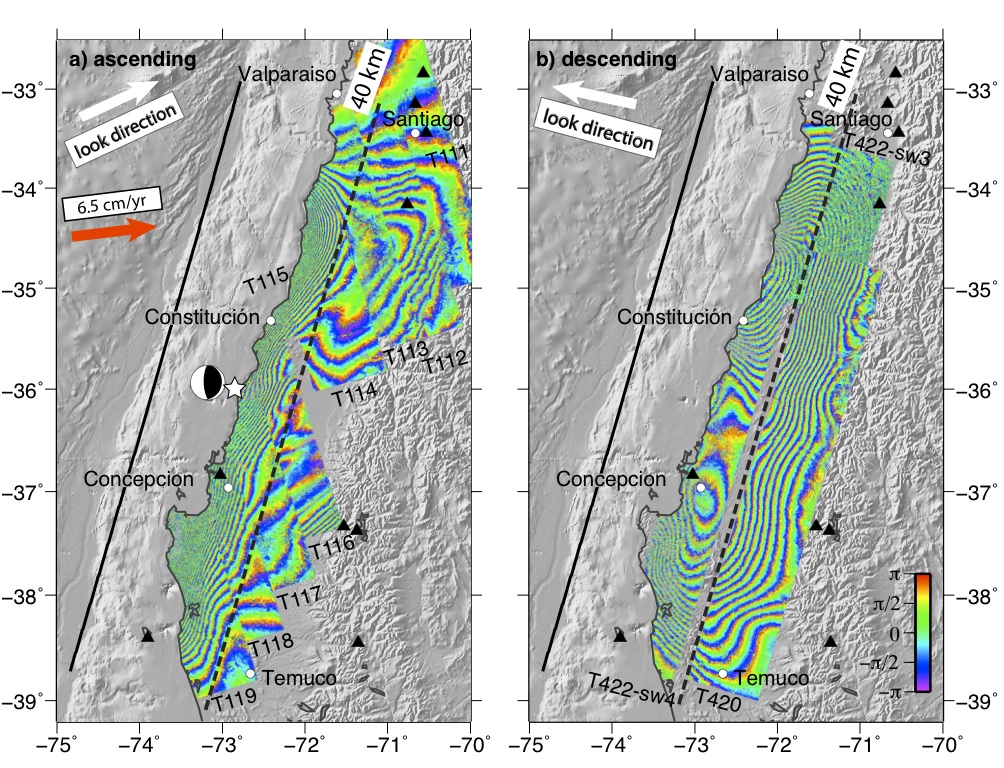 |
Nine tracks of ALOS ascending interferograms (FBS-FBS mode) and two tracks of ALOS descending interferograms (two subswaths of ScanSAR-ScanSAR mode and ScanSAR-FBS mode, and one track of FBS-FBS mode) cover a wide area from the coastline of central Chile to the foothills of the southern Andes. The white arrows show the radar look direction. The color scale shows the wrapped phase that corresponds to the range change (11.8 cm per cycle) between the ground points and the radar antenna. The ScanSAR acquisition of Track 422 on March 1, 2010 is particularly important for recording the entire coseismic deformation along the coastline of Chile. The white star indicates the earthquake epicenter. The focal mechanism of this earthquake is from Global CMT solution [NEIC, 2010]. The black triangles show the locations of the 13 GPS sites used in the inversion (4 sites are outside of the map boundaries). Solid black line shows the surface trace of the simplified fault model and the dashed black line marks the 40-km depth position of the fault for a 15 degree dip angle. The down-dip slip limit of this earthquake can be infered intuitively by the fringe pattern of the interferograms. Red arrow shows the interseismic convergence vector.
Satellite images were collected by the
L-band synthetic aperture radar
aboard the ALOS spacecraft that is operated by the Japanese Space
Agency - JAXA.
|
Profiles across the fault
Coseismic slip inversion
Updated coseismic slip model and static stress change


